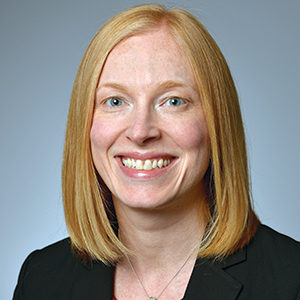As drug costs continue to increase, integrating your company’s medical and pharmacy benefits could result in significant savings for you and your employees.
“Drug costs make up 20 to 30 percent of health care spending, so managing drugs in an affordable way becomes extremely critical,” says Sarah Marché, Senior Vice President, Pharmacy & Clinical Market Strategy, Highmark Blue Cross Blue Shield. “By putting medical and pharmacy benefits under one umbrella, employers can help manage spending and improve overall health outcomes.”
Smart Business spoke with Marché about how to provide accessible, affordable and proven prescription drugs through your health plan, and how your carrier can help.
How are drug costs managed?
Formularies outline what drugs are covered under a plan. The goal is to provide the most clinically effective drugs to treat all diseases while balancing the cost effectiveness of those drugs at the same time.
Utilization management makes sure that when a payer — whether a health plan or an employer group — is paying a high cost for drugs, those drugs are used for the right patient at the right time. You don’t want to discover after the fact that an expensive drug was not the best one to meet the patient’s clinical needs.
Once the most effective drug is determined, then look at the best place — the least costly, most clinically appropriate site — to receive treatment. For example, some drugs require supervised infusion and a patient’s home may be less expensive than a hospital setting or a standalone clinic.
What is the value of integrating medical and pharmacy benefits?
Integration drives better results clinically and financially. Some employers use a carved-out pharmacy benefit management solution, working with a third-party to manage their pharmacy beneft, but integrating keeps medical and pharmacy in one place.
Health care is complicated and is getting more so. An integrated system provides ease of use for the consumer with one number to call and one card to use. And as more drugs are approved for coverage under the medical benefit, it is increasingly important to integrate both benefits to ensure an aligned approach to disease management. Integrating allows the carrier to ensure drug coverage between drugs covered under the medical and pharmacy benefit are aligned and don’t leave the patient stuck in the middle, with both sides denying the claim.
An integrated plan provides a full view of the patient in real-time. Studies comparing employee groups that integrated to those that carve out pharmacy benefits found they have lower costs, improved health outcomes and better patient engagement, a result of the holistic management of patients.
Integrating medical and pharmacy also allows management of side effects and helps ensure medication is being handled correctly so you don’t lose an expensive drug because of improper handling. The goal is to ensure the payer is paying for the most clinically and cost-effective drug.
How can employers choose the best option for their plan?
Some health plans have teams of clinicians including pharmacists, medical directors, nurses and other health care professionals to help guide you in how to design your benefits to drive the best clinical and cost outcomes. They will look at claims experience, claims costs and distribution of costs and identify areas of opportunity to address rising costs.
Then look at the recommended benefit design to see what disruption it may cause employees. As much as employers want to save on claims costs, they want their employees to experience as little disruption as possible and, when disruption is necessary, they want their employees to have a positive experience with any necessary changes. Helping employees better understand they why behind the change is also important.
Every industry is facing the rising cost of drugs. They are not only becoming a bigger piece of health care spending but new drugs are launching at a higher price. Innovation is exciting, but it comes at a cost, and we can help manage those. There is no future where drugs are not such a big part of health care spending, so employers need to manage it they can with an integrated, optimized benefits program. ●
INSIGHTS Health Care is brought to you by Highmark Blue Cross Blue Shield.


